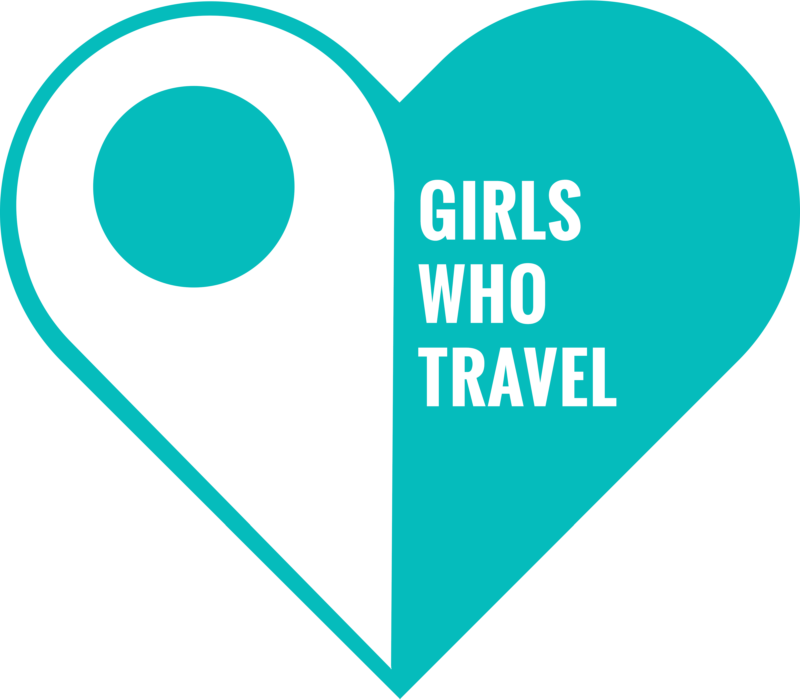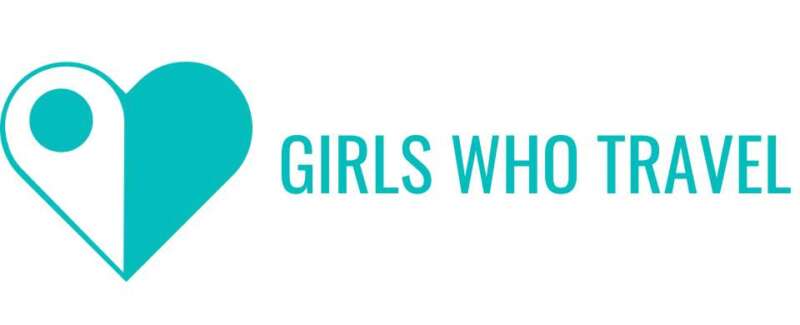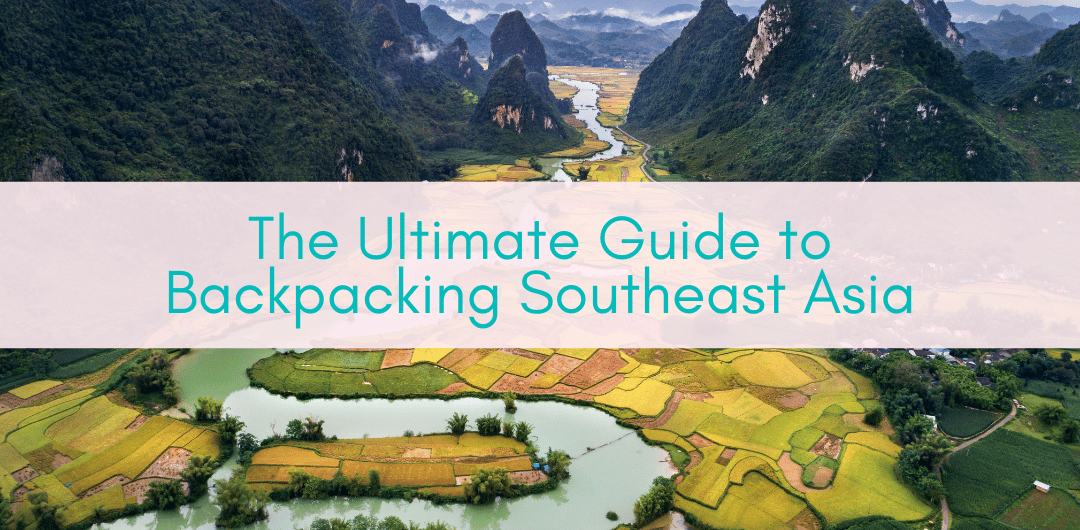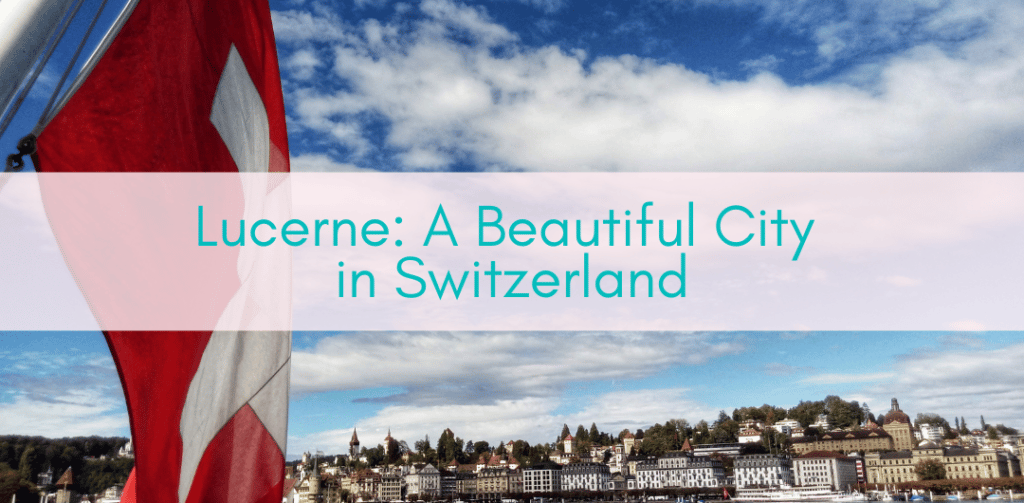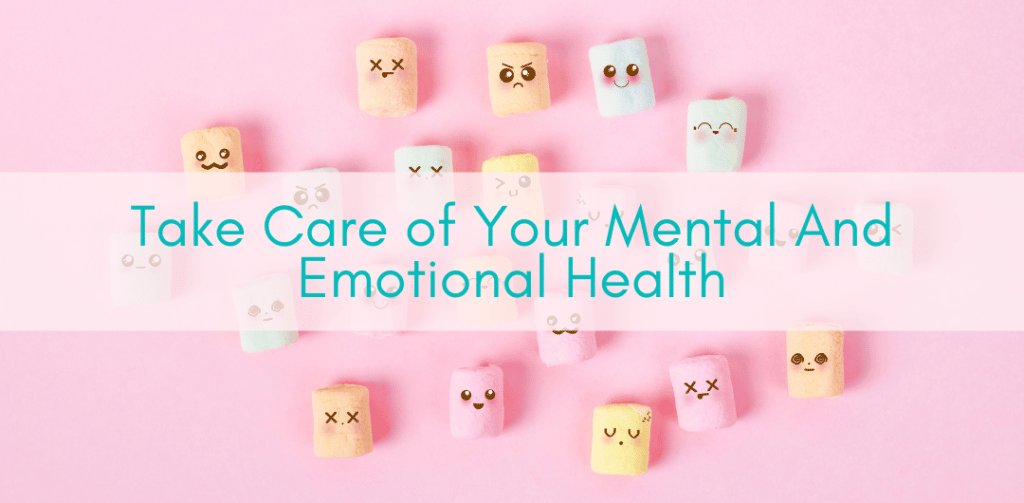The Ultimate Guide to Backpacking Southeast Asia
Southeast Asia is a region bound to excite you. From mountain ranges to clear blue seas, from hiking to island hopping, not to mention the many, many spectacular cultural sites, there are many things to do and see. Learn about the different cultures, explore ancient history, and hit the exciting street food scene when you get hungry from all your adventures.
The region is very safe, which adds to its attraction for travelers of all kinds, not just people backpacking Southeast Asia. Violent crimes are rare, and not even pickpocketing, a concern in so many tourist destinations, if much of a problem. The locals are generally very friendly and often display some friendly curiosity towards foreign visitors.
Direct flights from all over the world to larger places such as Singapore or Bangkok make the region easily accessible. Relaxed visa policies add to the ease of moving between countries. Several modes of transportation are available locally, as well as between the different countries. Backpacking Southeast Asia is a fantastic opportunity for people from Western countries to experience a culture vastly different from their own. Immerse yourself in this experience and come home with a whole new perspective of the world.
This post contains affiliate links. This means we make a small commission at no cost to you if you click through and make a purchase. All prices listed are accurate at time of publication.
Backpacking Southeast Asia
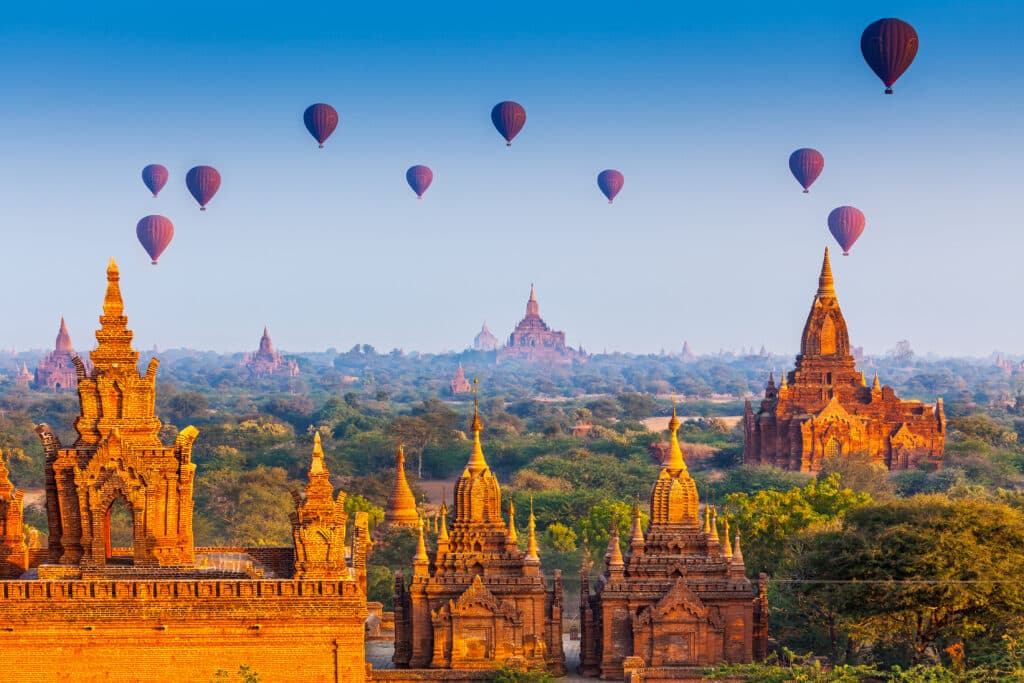
Congratulations! You have decided to go backpacking Southeast Asia, one of the most amazing places in the world for this purpose! In this article, you’ll find out all there is to know: facts about the region, your perfect itinerary for urban backpacking as well as backpacking in more remote regions, tips and tricks, and all the essentials you should bring along.
Facts About Southeast Asia
Weather
Southeast Asia is tropical, so unless you are on a high mountain, the weather will be warm. Most of the region’s average annual temperature is around 80 Fahrenheit (27 Celsius). When backpacking Southeast Asia it is important to know that there are three seasons: the hot season, the dry season, and the rainy season. The hottest months of the year are generally March to May, with temperatures exceeding 104 Fahrenheit (40 Celsius).
Unless you are used to the extreme heat, be careful when backpacking Southeast Asia during this time, take precautions, such as staying hydrated, and avoiding the sun as much as possible, or choose to visit in the dry months instead.
The best time to visit for travelers of all kinds are the months from November to February, when the weather is dry and relatively cool. While traveling to Southeast Asia is possible any time of the year, one can expect a hot, humid climate with short but heavy bursts of rain from June through October.
Currencies
There is good news and bad news in regards to currency when you are backpacking Southeast Asia. The bad news is that, since Southeast Asia consists of 11 different countries, there are eleven different currencies. But do not despair! The US Dollar is widely accepted in the region, and even the de facto currency in several countries such as Laos, Vietnam, and Cambodia. While that makes getting around very easy, you should keep in mind a few things:
- While many hotels and larger shops, especially in more populated areas, prefer payment in USD, carrying some local currency is still a good idea. Make sure to research each country’s customs in regards to currency before you head there.
- While cold, hard cash is the best way to go when backpacking Southeast Asia, carrying large amounts of it is fraught with risk. If you fall victim to a pickpocket, you have a serious problem. Larger countries and cities accept credit cards, but make sure not just to inform your bank that you will be traveling to the region to avoid having your card shut off, but also check the terms and conditions. If using your card in a foreign country incurs large fees, this is not the best option for you. If you are making a withdrawal with your debit card, likewise check the fees. There may be fees from your bank, as well as from the foreign bank. Make one large withdrawal rather than a few smaller ones to avoid extra fees. Only use ATMs that are inside, preferably part of a bank. In rural areas, ATMs can be hard to come by, so make sure you travel prepared.
- In the age of credit cards very few people still use traveler’s checks, but they are still a good idea, especially as a backup when you are backpacking Southeast Asia. A traveler’s check is a check for a certain fixed amount, say $50 USD, or $100 USD, that can be cashed at a bank or used in payment after being endorsed with the holder’s signature. Carrying money in this way is very safe.
Electricity
When you plan to go backpacking in Southeast Asia, it’s important to be aware of the fact that approximately 95% of the region has access to electricity. Sounds like a lot? It is, unless you are in desperate need to charge your phone and there’s no outlet within a 100 mile radius. The key is to be prepared, and we will cover how to be later when we talk about essentials needed for backpacking Southeast Asia. Brunei has the highest access at 100%, and the lowest is in Myanmar, with only around 70% of the country having access to electricity.
Languages
The main languages spoken in Southeast Asia are Lao, Thai, Burmese, Khmer, Vietnamese, Tagalog, Malay, Indonesian, and Mandarin – none of which you likely learned in school. As always we recommend you pick up some basic phrases for the countries you are planning to visit. To be able to say, at the very least, hello, thank you, and goodbye is polite and respectful. You can easily do this before you even leave home – make a list of the countries you’ll visit, and the languages spoken, and write down the phrases you think will be helpful.
As a general rule you will find that English is widely spoken in bigger cities, and in the hospitality industry. Singapore, for example, is the number one country in all of Asia when it comes to fluency in English. Translation apps can be helpful, but make sure that you don’t incur horrendous charges if you use your cellphone while backpacking Southeast Asia.
Internet access
While it is healthy to do some digital detox, let’s be real: you are backpacking Southeast Asia and can’t wait to share your adventures with friends and family back home. If you don’t want to spend an exorbitant amount of money on roaming while using your cellphone, your only option is to find a place that has internet access, especially if you are a digital nomad and rely on the internet to make a living. There’s great news: the search for WIFI will not be a quest that will take you all day.
Finding reliable access is a different story, but if all you want to do is post a few pictures on social media, you have nothing to worry about. Most accommodations offer free WIFI, no matter if you are staying at a hotel or a hostel. Internet cafes are widely available, but again, the more rural the area, the harder they’ll be to find. A good way to ensure the internet is fast and reliable is a homestay. Homeowners tend to invest in their property, and you won’t be sharing the connection with a hundred other people.
Transportation
Transportation is widely available in many forms. The quickest way to travel is by plane. Plenty of budget airlines service the region. The biggest ones are AirAsia, Jetstar, and Scoot.One thing to keep in mind is that budget airlines usually don’t service the major airports, so you might be taking various other forms of transportation to an airport further out in the sticks. And – and this is true for budget airlines around the world – they make money by charging extra fees for literally everything. While planes are the quickets and most convenient way to travel, they are also the most expensive choice and may thus not be a good choice for people backpacking Southeast Asia.
Buses are not just the most economic way of traveling the region, they are also convenient. Taking a bus doesn’t require a lot of planning. Just show up at the bus station, hop on, and go! Note: if the bus doesn’t have seating available you are out of luck and won’t get to go. Therefore it is a good idea to book a day ahead of time, which is still a lot less planning and more spontaneous than booking a plane ticket.
There is no one more bus line such as Flixbus or Greyhound. Instead, they are run by many small operators. Just choose the operator who services your chosen route and off you go! Since the bus system is widely used by tourists, especially by people backpacking Southeast Asia, there are now established tourist busses that will even pick you up at your accommodation and drop you off right at your destination. However, those are a bit more expensive than the local busses.
The only country in the region with an extensive train system is Thailand. Vietnam has a coastal train line that stops at nearly all major tourist attractions. Tickets can easily and securely bought online. Travel between countries by train is possible, and an overnight journey in a sleeper car is a fine way to save some $$$ on accommodations when backpacking Southeast Asia. Comfort and amenities differ widely, so make sure you do your research before you go, and if no amenities are available, pack accordingly.
Other modes of transportation include motorbikes, ferries, and tuk-tuks, and those are generally used locally rather than for traveling longer distances.
Accommodation
Whatever your heart desires, you will find it here. From luxury hotels to hostels, Southeast Asia has it all. Hostels are the perfect budget accommodation, and they are available most everywhere. They are a fun way to connect and make new friends when backpacking Southeast Asia. The easiest way to find a hostel in your chosen destination is to check out Hostelworld. This website doesn’t just list all available hostels in the area, but it shows ratings and reviews, which will help tremendously when having to choose a hostel.
Hotels are also widely available, and prices range from very affordable to high end.
Southeast Asia Backpacking Itinerary
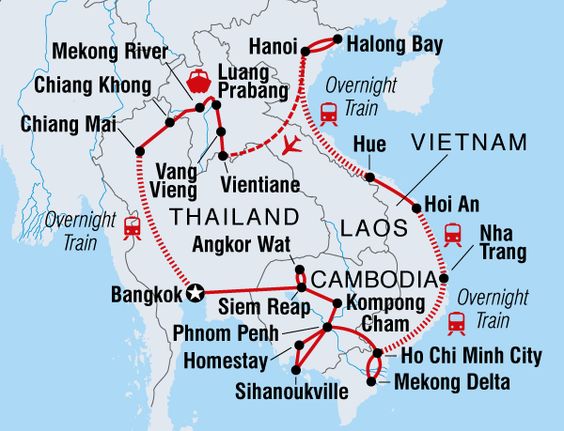
The Banana Pancake Trail is a loose assembly of places through Southeast and South Asia popular with backpackers. Too have the full experience, plan for 6 weeks time. Here are the must-see places along the Banana Pancake Trail for your perfect trip backpacking Southeast Asia.
Bangkok, Thailand
Bangkok is easily accessible from all over the world, and a perfect place to start your adventure backpacking Southeast Asia. Bangkok, the capital, is the most populous city in Thailand with 8 million inhabitants, and there’s plenty to do. If you can spare 3 to 5 days, you will be able to visit the major attractions and get a good feel for the place.
Prepare yourself for the intensity of this place. It’s big, loud, hectic, and it can make your head spin. But it is fairly clean as far as big cities go. It’s a city that never sleeps, and you will be able to find things to do around the clock. Thailand is one of the perfect destinations for adventurous millennials.
Visit the Grand Palace.
The Grand Palace is the most famous attraction Bangkok has to offer. It is dazzling, spectacular, and the one thing you can absolutely not miss seeing on your stop in Bangkok while backpacking Southeast Asia. The Grand Palace was the official residence of the Kings of Siam from 1782 until 1925. Nowadays is is only used for official events, but visitors have the chance to explore the Palace and the Grounds. Plan several hours for your visit.
See the reclining Buddha at Wat Pho.
This is a must on your adventure backpacking Southeast Asia. Wat Pho is a Buddhist temple complex, also known as the Temple of the Reclining Buddha. It is one of the oldest temples in Bagkok. The exact age is unknown, but it is believed to have been build, or possibly expanded, from 1688-1703. Built in 1848, the Reclining Buddha is the largest Buddha statue in the Land of Smiles.
Go shopping at Chatuchak Market.
But remember, you are just starting your trip, so don’t load up on souvenirs just yet! Find every item you could ever want in more than 8000 stalls covering a total of 27 acres.
Ride the Sky Train.
There’s simply no better way to get around Bangkok and cool off at the same time – the Sky Trains are airconditioned! Ride high above the busy traffic and enjoy the view.
Visit the Bangkok National Museum.
Art lovers will rejoice in the chance to see the largest collection of Thai art and artifacts in Thailand.
Ride a boat on the Chao Phraya River.
Since you are visiting the ‘Venice of the East’ while backpacking Southeast Asia, a boat ride is a must!
Eat your heart out in Chinatown.
Restaurants and street food stalls will compete for your attention. Fun fact: Bangkok’s Chinatown is one of the largest in the world! It is the smallest district in Bangkok, yet has the highest population density. Take your pick of the delicacies on offer, then wander around, enjoying the vibrant color, plentiful lights, and Chinese temples.
Eat even more street food.
Chinatown isn’t the only place to pick up something delicious. Literally every single busy road will boast an array of vendors offering Thai cuisine. This is a cheap option to fill the belly, for locals and tourists alike.
Escape from the hustle and bustle of the city in Lumpini Park.
On the weekends the park can get busy, so opt for a visit early in the morning, or just before sunrise.
Dive into the nightlife scene.
The nightlife in Bangkok is ah-mazing! Join the street party at Khao San. Nana Plaza is the place to hit go-go bars and clubs, or to enjoy the best people watching in all of Bangkok. Have a cheap drink in the red light district, Soi Cowboy. It’s the smallest of the party streets, but still boasts around 40 bars! If that’s not your scene, hit one of the roof top bars and sip away while enjoying a view over the city.
Ko Tao, Thailand
Did you know that Thailand has 1430 islands? Koh Tao is one of them, located in the Chumphon Archipelago on the western shore of the Gulf of Thailand. It is one of Thailand’s most popular tourist destinations, especially popular with people backpacking Southeast Asia, and a fabulous place to enjoy the great outdoors. Expect beautiful beaches, pristine waters, and – crowds.
Take a hike.
Get away from the crowds and take the beaten path along the coast from Mae Haad to Chalok. This hike is suitable for every fitness level. Other hiking trails include a trek to to the abandoned resort in Laem Thain, Sairee Beach to Tanote Bay, and Sairee Beach to Mango Bay.
Explore the viewpoints.
Love @ Koh Tao Viewpoint isn’t just a viewpoint, but possibly the most romantic bar in all of Thailand. Mango Bay Viewpoint is an all time favorite for travelers backpacking Southeast Asia. Two View Viewpoint is at the summit of the island. Chalok Viewpoint has the best views over Chalok Bay with Koh Phangan in the background. Climb up to John Suwan viewpoint Koh Tao from Freedom Beach.
Relax on Freedom Beach.
It’s the most scenic spot on the island, and can unfortunately get quite crowded.
Go island hopping and see Koh Nang Yuan.
Okay, this sounds silly. But this is a great idea for several reasons. Koh Nang Yuan is a small cluster of 3 islands, connected by strips of sand. These islands are only about 300 feet from Ko Tao, so this is a quick trip. The water is pristine and invites to you take a dive, snorkel, or simply relax and sunbathe while reading a good book during your recovery time on your adventure backpacking Southeast Asia.
Ko Pha-Ngan, Thailand
Ko Pha-Ngan is another stop you shouldn’t miss when backpacking Southeast Asia. It is Thailand’s 5th largest island, located in the southeast. It is famous for its natural beauty and pristine beaches. It is very popular with tourists and can get quite crowded in the summer, especially during the time of its most famous happening: the Full Moon Party.
Dance the night away at the Full Moon Party.
It occurs every month, either on the night of, before, or after the full moon. It’s a wild event, and a favorite of people backpacking Southeast Asia. What can you expect? The gathering attracts a diverse crowd, so no matter who you are and where you are from, you found the right place to come. There will be loads of attractions, such as fire skipping ropes, lots of food, drinks, and drugs.
BEWARE: drugs are illegal in Thailand. Undercover officers regularly pose as guests at the party. You do NOT under any circumstances end up on an episode of ‘Locked Up Abroad’ for a night of fun. It’s not worth it. Enjoy the alcoholic beverages instead, but within reason, and stay safe. Buy your drinks at the venue and not from some vendor in a back alley. Buckets of alcoholic beverages are available at the venue for reasonable prices (from 250-500 Baht, roughly $ 7-14 USD).
Expect lots of music, from any spectrum you can imagine. This event truly caters to everyone. You can get your ticket most anywhere in the main alley. A wristband serves as proof of purchase. Note: Protect your feet and wear proper shoes. The beach can end up littered in garbage.
Enjoy the coffee culture.
While a random island in Thailand may not immediately come to mind when thinking of coffee culture, Ko Pha-Ngan proves you wrong. Several cafés and coffee shops serve a Java that’ll wake you right up after that Full Moon Party!
Enjoy the weather.
Ko Pha-Ngan is truly the one spot that has perfect weather year round. Never too hot, never too cold, it offers the ultimate comfort when backpacking Southeast Asia.
Krabi, Thailand

After all this activity and partying you’ve enjoyed you are most likely ready for a relaxing break on your trip backpacking Southeast Asia. Limestone cliffs dominate the quaint scenery in Krabi, along with dense mangrove forests, and roughly 200 offshore islands. Expect to find some peace and quiet in this extraordinarily beautiful location.
Lounge on the most beautiful beach in Thailand.
Railay beach has that reputation! This stunning white beach, surrounded by spectacular limestone cliffs, is only accessible by boat.
Go rock climbing.
Since you are already at Railay beach, enjoy some rock climbing!
Visit Thung Teao Forest Natural Park.
It’s the best place for nature lovers. One notable attraction is the Crystal Lagoon, also called Emerald Pool. Swim in the clear, naturally warm water, and admire the waterfall.
Go boating.
You can hire your own boat, or go with a guide to explore the beauty of approximately 200 islands on Krabi’s coastline.
Visit a temple in a cave At Wat Tham Sua.
You may think you’ll see plenty of temples on your trip backpacking Southeast Asia, but how many of those will be in caves? Located in a warren of caves in the middle of the jungle, Wat Tham Sua still houses monks today. Don’t miss the climb up a meager 1,237 steps to see the footprint of the Buddha and the view of the Andaman Sea and its islands.
Take a speedboat to the famous Phi Phi islands.
The islands shot to fame after the movie ‘The Beach’ was filmed here. It can get crowded, so get there early.
Revive your tired muscles at Klong Thom Hot Springs.
One of the downsides of backpacking Southeast Asia is that you carry all your belongings on your back – which can get quite tense. A soak in hot thermal water is the solution.
Siem Reap, Cambodia

After so much beach and nature time, head to Siem Reap for a cultural experience during your experience backpacking Southeast Asia. The city was the site of successive capitals of the Khmer Empire, starting in the 9th and lasting in to the 15th century. Here you will be able to visit Angkor, the ruins of the aforementioned empire, with the highlight being Angkor Wat, the main temple.
Fun fact: Angkor Wat is pictured on the Cambodian flag.
Rather than leisure walks on the beach and snorkeling, you’ll spend your days here visiting cultural sites and learning about Cambodian history.
Tour Angkor Wat.
This is most likely why you stopped here on your trip backpacking Southeast Asia: to see the world-famous Angkor Wat, the largest Buddhist temple on earth! It took 30 years to build this incredible structure back in the 12th century, and was most likely meant to be a funereal temple for King Suryavarman II. Rather than going on your own, book an English-speaking guide to get the full experience and understand the intricate details of this lost civilization’s history. Be respectful and adhere to the dress code.
Visit the Cambodia Landmine Museum.
This seems like a gruesome way to spend the day, but landmines are not just part of Cambodia’s history. To this day, several million landmines remain hidden in the fields around the country.
Live an animal lover’s dream.
Visit the Angkor Centre for Conservation of Biodiversity. The wildlife conservation center is your chance to get acquainted with Cambodia’s native animals. Another chance to do so is the Banteay Srey Butterfly Centre.
Take a hike on the Kulen Nature Trails.
Enjoy the lush rainforest and be ready for some surprises. Along these trails you have the chance to see monasteries and ancient temples. Don’t miss the waterfalls offering relief from the heat!
Refresh your tired toes with a Fish Spa Pedicure.
Sounds weird? It definitely is, at least when you do it for the first time. These little fish looooove dead skin and will proceed to nibble all of it off your feet. Note: If you are super ticklish, this might not be for you.
Go shopping at the Old Market.
It’s a great place to snatch up some local fruit for a local price, and buy souvenirs for yourself or your loved ones at home.
Eat local specialties.
Like red ants. Yep, you heard that right. You don’t have to go scooping them up in the rainforest, however. Instead, try a local dish such as beef and ants. Isn’t trying the local cuisine one of the most fun things when backpacking Southeast Asia?
Phnom Penh, Cambodia
While Angkor Wat is likely the most well-known place in Cambodia, Phnom Penh, the country’s capital, is well worth a visit. In the 19th century it was a hub for textiles, pharmaceuticals, machine manufacturing, and rice milling, but it also offered schools of engineering, fine arts, technology, and agricultural sciences.
In the 1920s the French-built city was known as the “Pearl of Asia’. War and revolution destroyed a lot of its beauty, but Phnom Penh rose from the ashes like a phoenix, more beautiful and vibrant than before. Coming from the more quiet countryside, you face the potential of being slightly shell-shocked by this very busy place.
Get emotional on the Killing Fields.
There’s some gruesome history to take in on your trip backpacking Southeast Asia. The Killing Fields are the place where thousands of men, women, and children were brought to be killed by the Khmer Rouge regime. To this day heavy rainfalls can reveal bones of the victims.
Visit S21 Prison.
Hand in hand with a visit to the Killing Fields goes a trip to the S21 Prison. During the 4 years this former high school served the Khmer Rouge regime as a torture prison, 14 000 people entered its walls, and only 7 left them.
Take a trip to the National Museum. This museum covers Khmer culture from ancient times until today.
Note: The Khmer people are not to be confused with the Khmer Rouge regime. The Khmer people are simply members of an ethnolinguistic group constituting most of the population of Cambodia.
Support a cause at the Daughters of Cambodia Visitor Centre.
The Daughters of Cambodia Visitor Centre is a place where victims of sex trafficking have a chance to learn a trade and acquire skills that will help them make a fresh start in life. Buy souvenirs at the boutique and support a wonderful cause.
Don’t miss the Royal Palace.
Unlike other palaces in the region, this one is actually the current resident of the king. The complex features out of this world temples and quarters. Take in the history of the royal family and the city of Phnom Penh while taking a stroll by the river on your trip backpacking Southeast Asia.
Be light-hearted at the Wildlife Alliance.
This animal sanctuary and conservation center does great work in Cambodia in regards to anti-animal trafficking efforts, and around the world in educating communities on conservation. You can book an incredible once-in-a-lifetime tour here. During the 9 hour tour you go to a local market to pick up fruit and get to hand feed elephants. Most amazingly, you can have a souvenir shirt painted by ambassador elephant Lucky. If she likes you enough to do so, that is. You get to see tigers, leopards, gibbons, otters and many other endangered animals, as well as the nursery where baby animals are being cared for, all in an ethical way.
End the day at Phnom Penh Night Market.
Some of the aforementioned sights are emotionally challenging. Ground yourself with some modern Cambodian dishes at the Phnom Penh Night Market. Once you’ve had your fill of all this deliciousness, wander around and shop for souvenirs, but again, remember that you are still in the middle of backpacking Southeast Asia, so don’t buy too much!
Ho Chi Minh City, Vietnam
Ready to move countries? Then the next stop on your backpacking Southeast Asia adventure should be Vietnam. Ho Chi Minh City, formally known as Saigon and located in the South of Vietnam, is the country’s largest city. It’s Vietnam’s financial and business hub and a booming metropolis. You could easily spend a week here and not get bored. But if you are pressed for time, make sure to cover these highlights in Saigon.
Visit the Independence Palace.
Also know as the Reunification Convention Hall, this structure, associated with the fall of Ho Chi Minh City in 1975, is a fantastic example of 1960s architecture. It’s open to visitors, unless official meetings are being conducted, so check ahead of time.
Check out the War Remnants Museum.
This museum used to be known as the Museum of Chinese and American War Crimes. It was built to to praise the patriotism and the resilience of Vietnamese who fought in the Indochina and Vietnamese war.
Shop at Binh Than Market.
It isn’t just Ho Chi Minh City’s biggest market, but also the most authentic. And when you are backpacking Southeast Asia, isn’t that what you are looking for? Authentic experiences? On offer is most anything. From souvenirs to basic necessities, it’s all covered. Do visit with an empty stomach, the food is delicious!
Get some java.
Coffee culture is big in Vietnam. It’s hard to stay undercaffeinated when cute little coffee shops line every corner of the city.
Catch the view from the Bitexco Tower.
Standing at 860 feet tall, it’s the highest building in Ho Chi Minh City. The view from the observation deck on the 49th floor is spectacular – but make sure to hit this attraction on a clear day!
Sample craft beer.
Ho Chi Minh City has an up-and-coming craft beer scene that cannot be missed when backpacking Southeast Asia!
Enjoy some peace when you stroll along the Pedestrian Mall.
The Pedestrian Mall is off limits to motorized vehicles and vendors, which makes it ideal for a stroll and some people watching.
Nha Trang, Vietnam
Departing the big city, head to Vietnam’s largest beach resort on your adventure backpacking Southeast Asia. Nha Trang is a larger town, home to a little over 500 000 inhabitants. It is very popular not just with people backpacking Southeast Asia, but with other travelers completing a circuit in this region, as well as with Vietnamese tourists. If you thought you left the big city crowds behind, you may be in for a surprise.
Head to the beach.
Obviously! Doc Let Beach is one of the most beautiful beaches in all of Vietnam. 18 kilometers of white sand, palm trees, and crystal-clear water offer plenty of space for the masses. It’s largely undeveloped. Nha Trang Beach is Nha Trang’s main beach. This is where things are happening. This 6 kilometer stretch offers a board walk to stroll along the ocean, restaurants, bars, gardens, and playgrounds, with beach vendors selling everything from fruit and drinks to trinkets. And who doesn’t need a beach day after experiencing all these amazing things while backpacking Southeast Asia?
Be amused.
Vinpearl Amusement Park was dubbed Vietnam’s Disneyland. A great way to spend the day!
Visit the ruins of the Cham Kingdom.
Po Nagar Towers, on the banks of the Cai River, are well preserved and date back to 780 AD.
Do a waterfall hike.
Ba Ho Waterfall is a great place to visit for nature lovers, and there are hiking trails in the area.
Ride a cable car.
Vinpearl Cable Car links Hon Tre Island to Nha Trang. Spend 15 minutes perched 40 meters above the sea and delight in the views.
Visit a Buddhist temple.
Hopefully at this point in your journey backpacking Southeast Asia you are not yet templed out. The striking Long Son Pagoda is a must when you visit Nha Trang!
Monkey Island
Monkey Island is a quick ferry ride away from Nha Trang and aptly named. It is inhabited by thousands of monkeys that were originally bred for export to the Soviet Union. Once you got your fill of watching these adorable animals, you can go swimming, kayaking, jet-skiing, or scuba diving.
Hoi An, Vietnam
Move on from Vietnam’s south coast to it’s central coast and the ancient town of Hoi An. From the 15th to the 19th century, Hoi An was a trading port. It is well-preserved and gives you a perfect example of what Southeast Asian trading ports looked like back in the day. Spend a day in this clean, quaint little city that is now a UNESCO World Heritage Site.
Stroll the Ancient Town.
This is especially impressive in the evenings, when the streets are illuminated by thousands of lanterns.
Visit the ancestral houses and pagodas.
These sites are in walking distance from town and require a ticket to enter.
Get something custom made.
Hoi An is famous for its tailors, and they can make anything from a suit to a leather handbag for you. The town also features several boutiques worth checking out. If you are looking for memorable souvenirs on your backpacking Southeast Asia adventure, this is it!
Hanoi, Vietnam
Visit Hanoi, Vietnam’s capital city on your trip backpacking Southeast Asia. This place has it all: cultural sites galore, the best street food scene in the whole country, and incredible architecture, old and new. With 5 million inhabitants, Hanoi is a big, tightly squeezed city. While you may find it charming, it’s also big, loud, and hectic. Time to put the city hat back on, adventure girl!
Visit Ho Chi Minh Mausoleum.
The mausoleum was built from 1973 to 1975. It is home to the corpse of Hồ Chí Minh, Vietnam’s greatest political leader.
See One Pillar Pagoda.
Built by the Emperor Ly Thai To in 1049, this pagoda is well over 1000 years old. It’s set in the middle of a lotus pond on a single stone pillar.
Catch a show at Hanoi Opera House.
It’s the largest theater in Vietnam.
Learn about women in Vietnam at Vietnamese Women’s Museum.
The exhibition features important artifacts from the past 100 years and shines some light on the role Vietnamese women played in their society.
Visit the Old Quarter.
This is a can’t-miss on your adventure backpacking Southeast Asia! The streets of the Old Quarter have been the home of craftsmen and artisans since the 15th century, and they still are today.
Enjoy Vietnamese folklore at the Water Puppet Theater.
The show is performed in a waist-deep pool, with the puppeteers hidden behind a screen.
Explore more temples.
Both Ngoc Son Temple and the Temple of Literature are worth your time. Temple fatigue isn’t allowed on your trip backpacking Southeast Asia!
Ha Long Bay
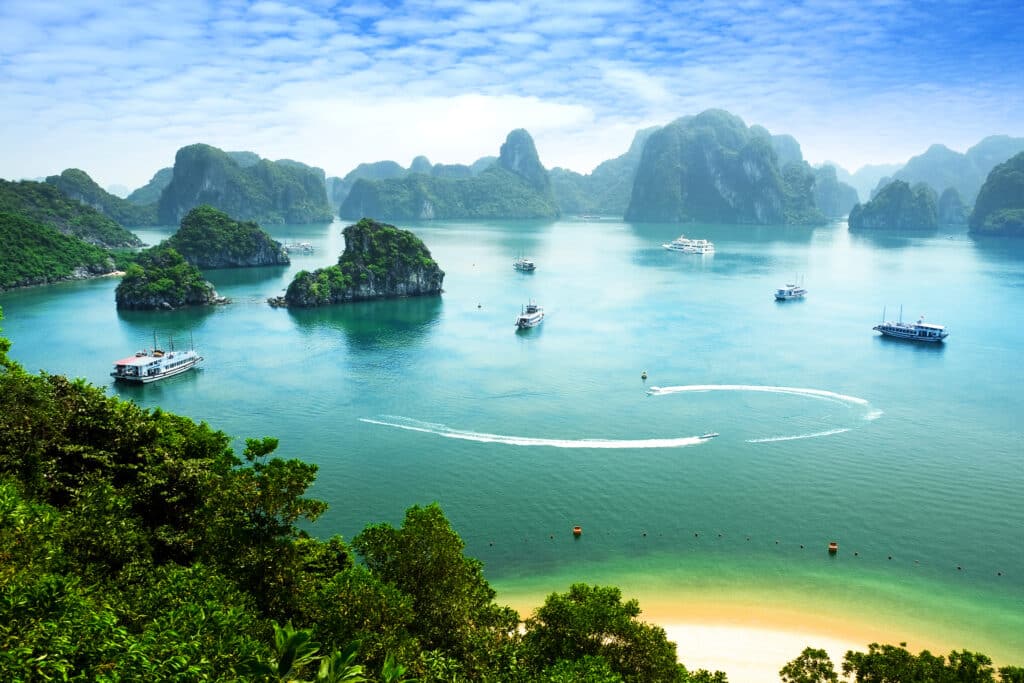
Back to nature! Ha Long Bay is a UNESCO World Heritage Site and thus a popular tourist destination. The name Hạ Long translates to ‘descending dragon, and the story is that in ancient times, when Vietnam first became a country, there were invaders. The Gods sent a mother dragon and her children for help. The dragons spit out jade and emeralds to build a wall against the invaders. These jewels became the limestone islands and islets of Ha Long Bay.
Go island hopping.
A cruise is the best way to explore the dragons’ jewels. There are many tour operators and different cruises, from the ones visiting famous islands to the ones exploring off the beaten path. Some even serve meals on board.
Explore caves.
Me Cung Cave and Hang Sung Sot Cave are both worth a visit. The former has the nickname ‘Bewitching Grotto’ and is most picturesque caves in Halong Bay. The latter offers a spectacular play of water and light that will make it seem like the giant stone formations are coming to life.
Dive into the underwater world.
Several diving schools offer the services. The clear waters invite everyone to take a dip.
Visit the shrine at Virgin Cave.
Located at Bo Hon Island, Hang Trinh Nu is a famous and popular cave at Ha Long Bay. It is associated with a legend of a beautiful fisherman’s daughter. Her family was very poor and in the service of a rich landlord. Because the girl was so stunning, the landlord demanded to have her as his concubine. She refused, and the angry landlord banned her to a wild island. One night, frightened and exhausted, she turned to stone in what we now know as the Virgin Cave.
See the most endangered primates in the world at Cat Ba National Park.
Langurs can only be found here! What a special treat on your journey backpacking Southeast Asia! Ready for a hike? Hire a guide and make the most out of your visit.
Sapa, Vietnam
Until now your backpacking Southeast Asia adventure has been nothing but balmy. Are you prepared to cool off? Then take a trip to Sapa, a mountain town in northwest Vietnam. Enjoy the break from the sometimes oppressive heat of the lower altitudes and see the awe-inspiring peaks, steep rice terraces, and picturesque villages of the Vietnamese mountains.
Go trekking.
This is the perfect place. If you are planning extensive trekking, get a guidebook. Some villages, like Cat Cat and Ta Phin are easy to find and do not require a guide book for help.
Stay in a mountain lodge.
You have visited a lot of touristy places while backpacking Southeast Asia. If you are ready for a break, stay outside of Sapa in one of the simple but comfortable mountain top lodges.
Summit a mountain the easy way.
Take a cable car ride to the summit of Mount Fansipan.
Visit an ethnic minority market.
Be sure to spend a Sunday in Sapa and visit the Bac Ha market, where hundreds of traders from the Dzao, Han, Xa Fang, Tay and Thai tribe offer their wares.
Luang Prabang
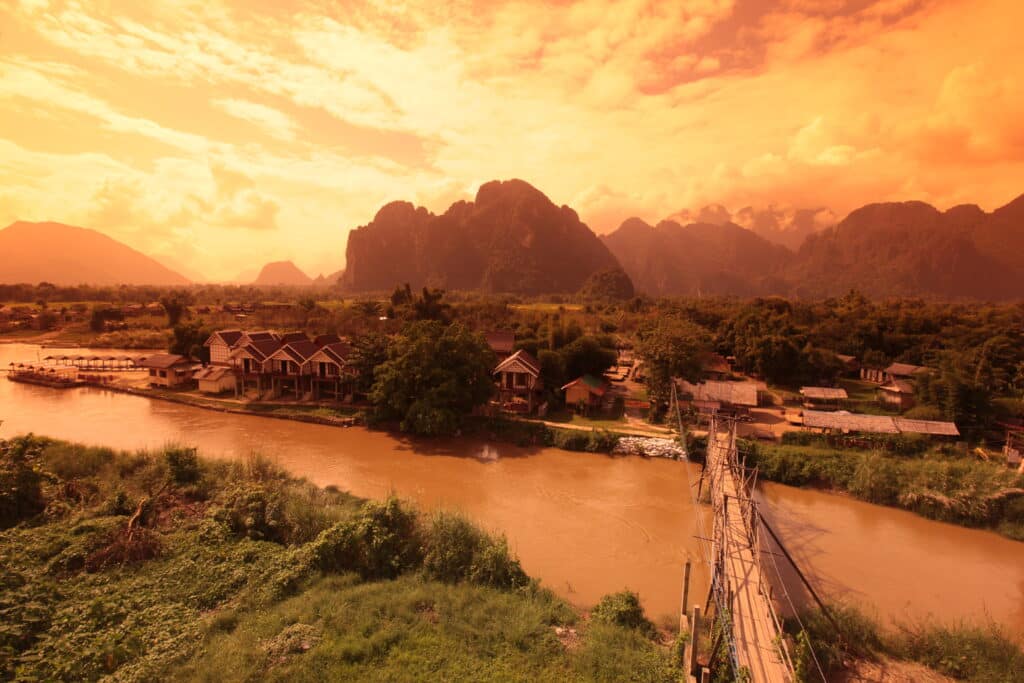
Bye bye Vietnam! Time to explore Laos on your trip backpacking Southeast Asia. Fun fact: Laos is the only land-locked country in Southeast Asia! Almost three-quarters of this country is covered in mountains and steep, forested hills. Luang Prabang literally means ‘Royal Buddha Image’. It consists of 58 village, and 33 of these comprise the Town Of Luang Prabang UNESCO World Heritage Site.
Hike to the Kuang Si Waterfalls.
The falls are a highlight in this region. You can either book a cycling tour or trek through the jungle to reach the site.
Visit a rice farm.
When do you ever get a chance to do that? Only on your trip backpacking Southeast Asia! Living Land Rice Farm is just outside the city.
Climb Phousi Mountain.
No cable car here, you’ll have to use your own feet to get to the summit. The good news? It’s only 355 steps, and you will be rewarded with incredible views and have a chance to see the small temple located here.
Add a ziplining adventure to your trip backpacking Southeast Asia.
Ready for a thrill? Visit Green Jungle Park to get an adrenaline rush on 900 meters of ziplines, among many other fun things.
Visit more temples.
Among the temples in the area that are noteworthy are Wat Manorom, Wat Xieng Thong, Wat Mai Suwannaphumaham, and Wat Sensoukaram.
Vang Vieng
By now, you have seen many a beautiful place while backpacking Southeast Asia. But get ready to turn it up a notch at Vang Vieng. This small town is located riverside among jagged mountains. However – and this might come as a surprise – Vang Vieng is known as a party town!
Party!
Since we are currently in the world’s most unlikely party town, let’s talk about, well, partying! Vang Vieng’s nightlife can be quite wild. Hit one of the most popular bars: Sakura Bar, Kiwi Bar, Viva Pub, Room 101, or the Warm Up Bar.
Go Tubing.
After a number of people died tubing, it is now a toned down activity, but nevertheless a lot of fun!
Go hiking.
If your hangover is bearable, hit the trails. Nam Xay is the best viewpoint.
Ride a hot air balloon.
Have you always wanted to do that? Vang Vieng is the place, because this activity is extremely affordable, unlike in many other places on this planet.
Visit the Blue Lagoon.
Or one of them, as there are several to choose from.
Vientiane
Don’t skip Laos’ beautiful capital city of Vientiane on your trip backpacking Southeast Asia. It is home to the most significant national monuments in the country, but at the same time is a lot less touristy than other places in Laos, so you can get a nice break from the crowds.
Visit Laos’ version of the Arc de Triomphe.
Patuxai Victory Monument was built to resemble the famous monument in Paris. It does look slightly different though, as it is carved with Hindu God symbols and features 5 towers. The monument is located in Patuxai Park, a nice place to go for a refreshing stroll on your adventure backpacking Southeast Asia.
See the most sacred building in Laos.
That Luang, built in the 16th century, is not just sacred, but also very picturesque.
Visit more temples.
I know, I know. Temples are everywhere, but honestly, when will you ever get a chance to see these spectacular structures again after your trip backpacking Southeast Asia? So head out and visit the following: Wat Ho Phra Keo, Wat Si Muang, and Wat Si Saket.
Venture outside the city.
Xieng Khuan is a meager 25 kilometers outside Vientiane, but it’s a spectacular stop on your journey backpacking Southeast Asia. It’s name means Buddha Park, and there are around 200 Buddha statues to be found on the beautiful grounds.
Chiang Mai, Thailand
Notice we are making a loop? Circle back to Thailand on your great venture of backpacking Southeast Asia. Founded in 1296, Chiang Mai is the largest city in the mountains region of Northern Thailand. And by large I mean – relatively large. With a population of around 127 000 you won’t get the same big city feel as you did in Bangkok, for example. The city is a haven for digital nomads from all over the world, thanks to fast, reliable internet that can be found in many places such as coffee shops and co-working spaces.
Visit Chiang Mai’s most famous attraction:
Doi Suthep. It is a temple, but Doi Suthep is actually the name of the mountain the temple is located on. Even if you are finally templed out, this is a sight you must see on your trip backpacking Southeast Asia. The view alone is worth the journey outside the city.
Walk the Handicraft Highway.
San Kamphaeng Road surely deserves its nickname. This 10 kilometer long stretch of road, leading from Chiang Mai to the village of San Kamphaeng, is littered with places selling not only pottery, but also stoneware, silverware, lacquerware, jewelry, sculptures, paperware, silk products and wood carvings. Another great stop to buy souvenirs while backpacking Southeast Asia.
Shop even more.
As opposed to many other markets in the region, Warorot Market is during the day and not exclusively a night market. Locals shop here, and the prices reflect that. If you are more interested in visiting a night market, head to Chang Klan Road.
Get your nature fix at Doi Inthanon National Park.
Even if you aren’t planning to spend a lot of time in Chiang Mai while backpacking Southeast Asia, Doi Inthanon National Park is worth a visit. It’s one of Thailand’s most popular national parks, and if you like waterfalls, some trails, beautiful remote villages, viewpoints, and impressive sunrises or sunsets, make sure to plan a day here.
Eat some more.
On this trip backpacking Southeast Asia you have already eaten your fair share of delicious food, but surely you have the heart to try one more thing: Khao Soi, a specialty in northern Thailand.
Explore the Grand Canyon.
Now you probably think this author is in dire need of looking at a map, but hear me out! Chiang Mai does have indeed its very own Grand Canyon! It’s slightly different than the one found in the US. It is an old soil quarry carved out of red clay soil. It has a water park, a great way to refresh on a hot day while backpacking Southeast Asia.
Go on a boat ride on the Mae Ping River.
Spend two hours on a boat, leisurely observing the scenery.
Temples, temples!
Visit the ruins of Wat Chedi Luang, and Wat Phra Singh.
There it is, you itinerary to the Banana Pancake Trail. Backpacking in Southeast Asia is an amazing experience. Hit all these spots or more, skip the ones that don’t sound attractive to you, and add on others. Not everyone likes their pancakes served in the same way!
Tips for Backpacking Southeast Asia
You’ve learned a bit about the region already, and you’ve got your itinerary to go backpacking Southeast Asia. In addition, we have collected valuables tips for your adventure.
Check the weather
Unless you are a hardy traveler, used to tropical climates during the rainy or monsoon season or extensive heat, plan your trip backpacking Southeast Asia carefully. While there are great advantages to traveling during the off peak season, it also comes with drawbacks. One of those drawbacks when backpacking Southeast Asia is the weather. If you are indeed trying to avoid the crowds, consider traveling at the tail end of the hot or the monsoon season.
On top of that, check the weather every day. If you travel during the rainy season, you might want to get an idea of when to expect that famous tropical rain. If you are backpacking Southeast Asia during the hot season, check the daily temperatures and make sure you have a cool place to relax when the temperatures are scorching.
Plan your route
You’ve been introduced to the Banana Pancake Trail for you trip. This is useful information when backpacking Southeast Asia. Ultimately though, it comes down to how much time you have, what your budget is, and your personal interest. The above itinerary lists the most popular stops, but you can adjust it to fit your needs. Making a plan is always a good idea, especially when traveling during the busiest times of the year. Popular accommodations may sell out, for example, and if you are not used to winging it, this may cause you undue stress.
Check visa and vaccination requirements
This is absolutely crucial. You do not ant to arrive at your destination, ready to go backpacking Southeast Asia, only to be sent home right away, especially if you are traveling abroad for the first time. Now there is no general information about visas, because a lot depends on your country of origin. If you are from a country that doesn’t provide you with a strong passport, you may have to apply for a visa in a more complicated process.
With this warning, I can tell you the good news: Most visas in Southeast Asia can be obtained upon arrival. A visa on arrival is the easiest and most convenient way to go, but again, please do your research and make sure you are eligible for this.
Before you buy your ticket, find out the vaccination requirements for each country you are planning to visit while backpacking Southeast Asia. Some vaccinations, such as the COVID-19 vaccine, or Hepatitis A and B, require two shots, so you need to plan ahead. This information can be obtained from the Department of State in your country, or the embassies of the countries you are planning to visit on your trip backpacking Southeast Asia.
Get travel insurance to make sure you are safe no matter what happens.
Learn from the locals
You know what they say. When in Rome, do as the Romans do. Or, in this case, when backpacking Southeast Asia, learn from the locals. Visiting the highlights in every country, region, or city is all fine, but if you want to have an authentic experience, ask the locals. And remember: Travel is a privilege. Not everyone gets to visit these amazing places all over the world. Be kind and respectful, always, and immerse yourself in the culture you are visiting.
Pack light
It’s crucial to not overpack, especially when backpacking Southeast Asia. However, you depending on your route you will have to pack for hot and cold weather, which is a bit tricky. There’s one thing that’s important to remember: it will be easy to get access to laundry. Lots of people go backpacking Southeast Asia, and hostels and hotels often cater to their needs. Additionally there are plenty of laundry shops available that will wash your clothes for next to nothing.
Dress Code
It is important to be respectful when visiting sacred sites. You’ve already learned about the abundance of temples you get to visit when backpacking Southeast Asia. Showing lots of skin is frowned upon, and you may be refused access to the site. It may be 100 degrees outside, but that does not change the rules. Skirts or shorts should extend below the knee (this is also true for men, not just for women!). Shoulders need to be covered as well. Sarongs are a great item to bring along to any such visit. It’ll easily cover up bare skin without adding an uncomfortably warm layer. Maxi skirts are also nice. While they are long, they are very flowy and allow a breeze now and then to relief your suffering.
Budget
Backpacking Southeast Asia is incredibly affordable. Your daily budget varies depending on where you are and how many extra activities you do, tours you book, etc. But in general a person backpacking Southeast Asia can expect to spend $ 35 USD in the more expensive places, and $ 25 USD in cheaper countries. This includes, gasp, accommodations!
Essentials for backpacking Southeast Asia
Last but not least, you need to know what to bring along.
Choose a bag
There’s a good chance you’ll be carrying your entire luggage around quite often. Choosing the right travel backpack, and knowing the ins and outs of how to pack it, are essential. Here are some packs we like:
- WANDRD FERNWEH Backpacking Bag. Travel light and keep everything super organized.
- The OSPREY Women’s Aura AG 65 is an all-time favorite.
- It’s big sister, the Osprey Ariel Plus 70, allows for just a tiny bit more room for your souvenirs.
- The GREGORY Women’s Deva 60 Pack has a slim profile that makes it appear less bulky.
- The DEUTER Women’s AirContact 60+10 SL Backpack may just be indestructible, perfect for a travel backpack.
Clothing & Shoes
We have previously talked a little about items of clothing that are absolutely necessary for this trip backpacking Southeast Asia. Here are the must-haves for backpacking Southeast Asia:
- Maxi skirts or dresses
- Hippie pants (best to buy them at your destination)
- Yoga leggings
- Comfy active shorts
- Dry fit shirts
- Short dress
- Bikini or bathing suit
- Foldable hat
- Comfy underwear & bras, and a sports bra
- Sarong with pocket
- Lightweight rain jacket
- Flip flops
- Walking sandals
- Trekking shoes
- Trekking socks
Electronics
You’ll be plenty busy on your adventure backpacking Southeast Asia. Do not overpack on electronics. They add a lot of weight, and if they are lost or stolen they are expensive to replace. Must-haves are your phone, a camera (unless you use your phone for that purpose), headphones, and a power bank.
Toiletries
Unless you are dead set on using certain brands of products, its easier to buy your toiletries upon arrival. Buy small amounts and replenish often to cut down on the amount of stuff you’ll lug around.
- Shampoo & conditioner
- Toothpaste & toothbrush
- Wet wipes
- Deodorant
- Sunblock
- Mosquito repellant
- Nail file
- Lip balm
- Menstrual products
- Moisturizer & lotion
- First aid kit
- Any prescription medication you might depend on
Other essentials
- Travel wallet & passport holder
- Sunglasses
- Microfiber towel
- Rain cover for your pack
- Reusable water bottle with filter
- Travel adapter
- Travel padlocks
That’s it! This is all you need to know about backpacking Southeast Asia. One last piece of advice – HAVE FUN!
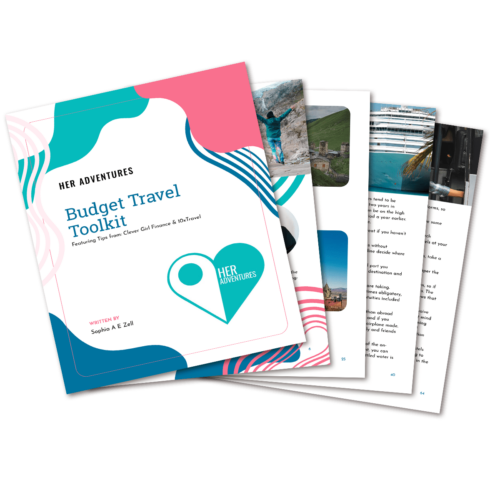
Get The Ultimate Budget Travel Toolkit
Looking for the ultimate budget travel resource? We’ve got you. We did all the research so you don’t have to. Save tons of money and time and start traveling sooner! LEARN MORE!
Her Adventures is an education and empowerment community dedicated to helping women explore beyond their boundaries. We welcome all people who identify as non-masculine/non-male to connect, educate and inspire each other with their stories, fears, knowledge, questions, and ideas. Because together we make each other strong. We hope you will join us and see the world.
Topics
Subscribe
Subscribe for news, updates, giveaways, and more!
JOIN GIRLS WHO TRAVEL
Join our inclusive community
of tens of thousands of women who
share your passion for travel in our
Girls Who Travel Facebook group!
